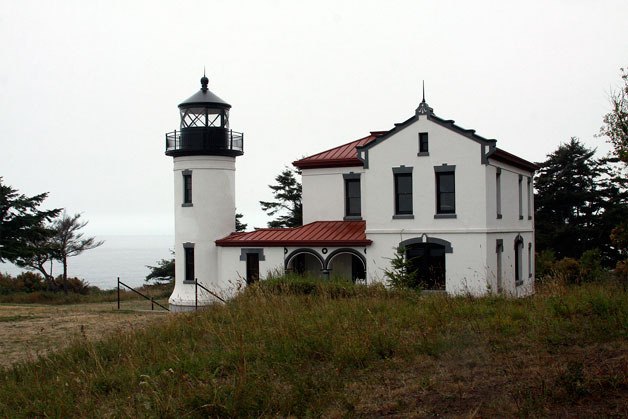It didn’t completely hit her until the box arrived at the doorstep of her Tacoma home last November.
Sandra Evans couldn’t understand all the fuss coming from Bingo, her small Bichon Frise poodle mix.
Then she noticed the box on her front porch and the return address from CBS and Rockefeller Center in New York City.
It was a surprise. Simon & Schuster, the major book publisher that is part of CBS, had sent advanced copies of her first novel without warning.
In more than 20 years of writing and experiencing repeated rejection, Evans could now start to believe this was all really happening.
It had to be. She was now holding the evidence in her hands.
“I sat down on the couch and cried for about two hours,” Evans said. “And I’m not a crier.”
Evans’ book, “This is Not a Werewolf Story,” is a middle grade novel aimed at 9-to-12-year-old readers that is set at Fort Casey on Whidbey Island.

The book’s inspiration came in part from many after-school conversations she found herself having with her son about a picture book he was reading in third grade that was based on a 12th Century French fairy tale that depicted a werewolf as more of a hero than a monster.
An owner of a doctorate degree in French literature from the University of Washington, Evans was well versed in French medieval folklore yet was struck by the impact the tale had on her son.
From that premise, she developed her own story, set in modern times, drawing inspiration from her son, the medieval French tale “Bisclavret” by Marie de France and her own experiences as a teenager while living on Whidbey Island.
Evans resided five years on North Whidbey, graduating from Oak Harbor High School in 1988.
“I still consider Oak Harbor home,” said Evans, who married a man she met in college yet still carries her maiden name.
Evans will appear at a book launch party at 7 p.m. Friday, July 29, at Village Books in Bellingham.
Already, the book is receiving praise with a glowing review from Library School Journal as well as a star from Booklist.
It is one of only 10 children’s books selected to the Indies Introduce Summer/Fall 2016 list, which represents independent booksellers’ top picks of the season featuring new authors.
All this is brand new territory for Evans, a former college professor turned high school French teacher who jokes about having a desk drawer full of rejection letters after past attempts to get novels published.
“I probably have 10 novels in various states of completion,” she said with a laugh.

The journey to strike a deal with a publisher has been a grueling test of patience, humility and perserverance.
She was determined to get a historical novel that she wrote published and became disheartened when her agent found no takers.
It wasn’t until those random chats with her son Mac three years ago that she started thinking about attempting a new writing style and reaching a younger audience.
She also switched agents and stayed focused on selling her works to a publisher rather than go the self-publishing route. The foundation behind that decision was personal.
She had spent time as a lecturer at the University of Washington and was a visiting professor for six years at the University of Puget Sound, but was unable to secure a tenured position.
“My experience in life has been that I’ve almost always been something,” she said.
“I’m always the one explaining reasons why things didn’t work out.”
She called “This is Not a Werewolf Story” a collaborative effort, crediting her agent and editors for pushing her to make the revisions necessary that resulted in a more polished final product.
When her agent put the mostly raw piece in front of 10 editors from major publishers, four of them said they wanted it.
Evans rewarded Simon & Schuster, which made the first offer.
The story follows Raul, a young boy who lives in a boarding school located near the tip of a cliff near Fort Casey.
Everyone suspects that the boy walks to the highway to meet his father every Friday afternoon to go home for the weekend, but don’t realize that the father had stopped coming for more than a year.
The story is centered around Raul’s time spent deep in the woods and at a lighthouse, where magical and mysterious phenomena occur after nightfall.
Evans spent plenty of time at Fort Casey as a teen and was inspired by memories there, including freaky trips into the Switchboard chamber.
“Back then, they used to let you run through the Switchboard,” she said. “I remember running through there and the terror of that pitch black. A lot of kids are afraid of the dark.”
In the book, Evans also incorporates Native American stories and other history from the island.
She considered Whidbey’s enchanting natural features a perfect backdrop for her story.
Incorporating “home” into her first published book makes it all the more sweet.
“I told my editor that I’ve kept every box and every envelope she’s sent me,” Evans said. “I have them all. I can’t throw them out.
“It’s so cool. There’s something about seeing Simon & Schuster that gives me such a thrill.”

